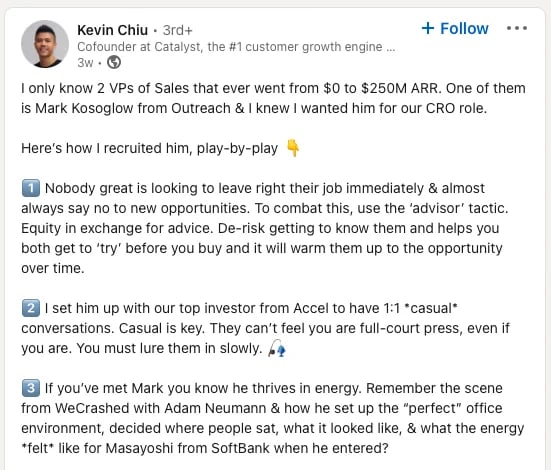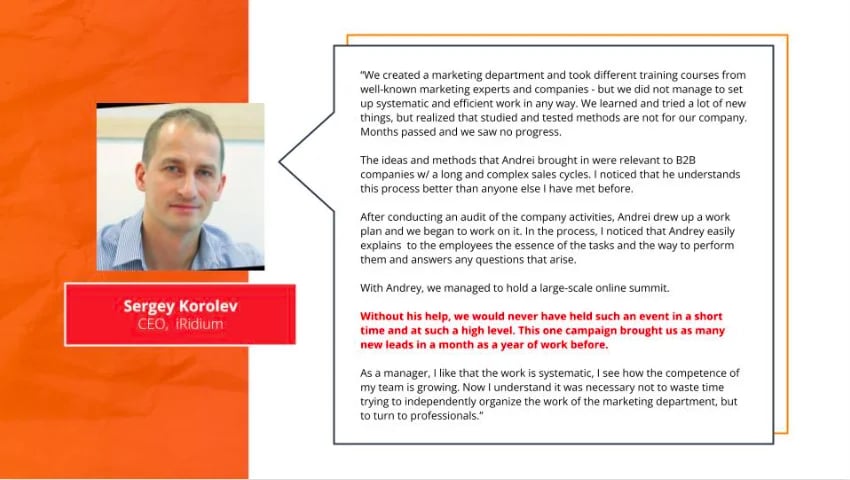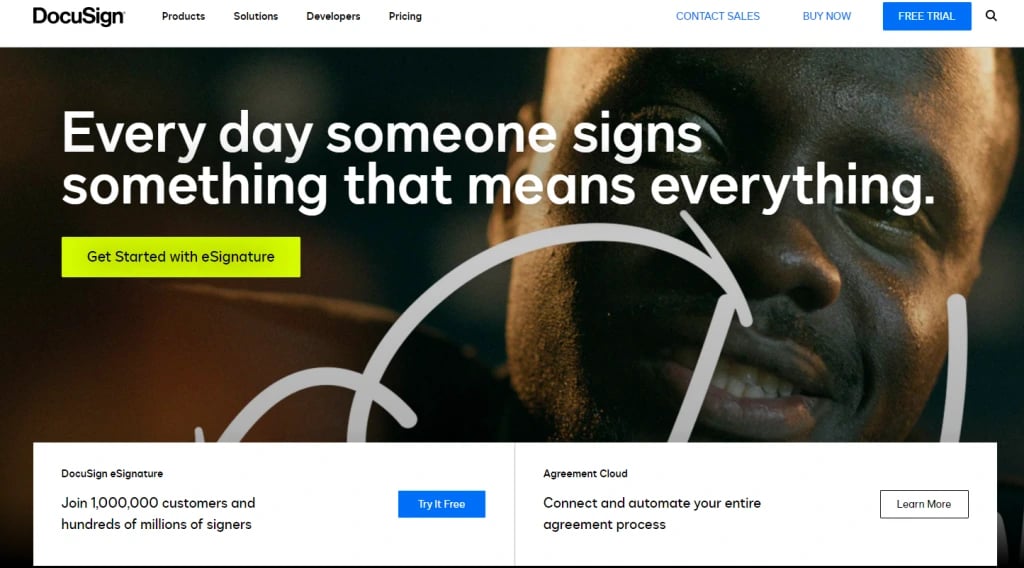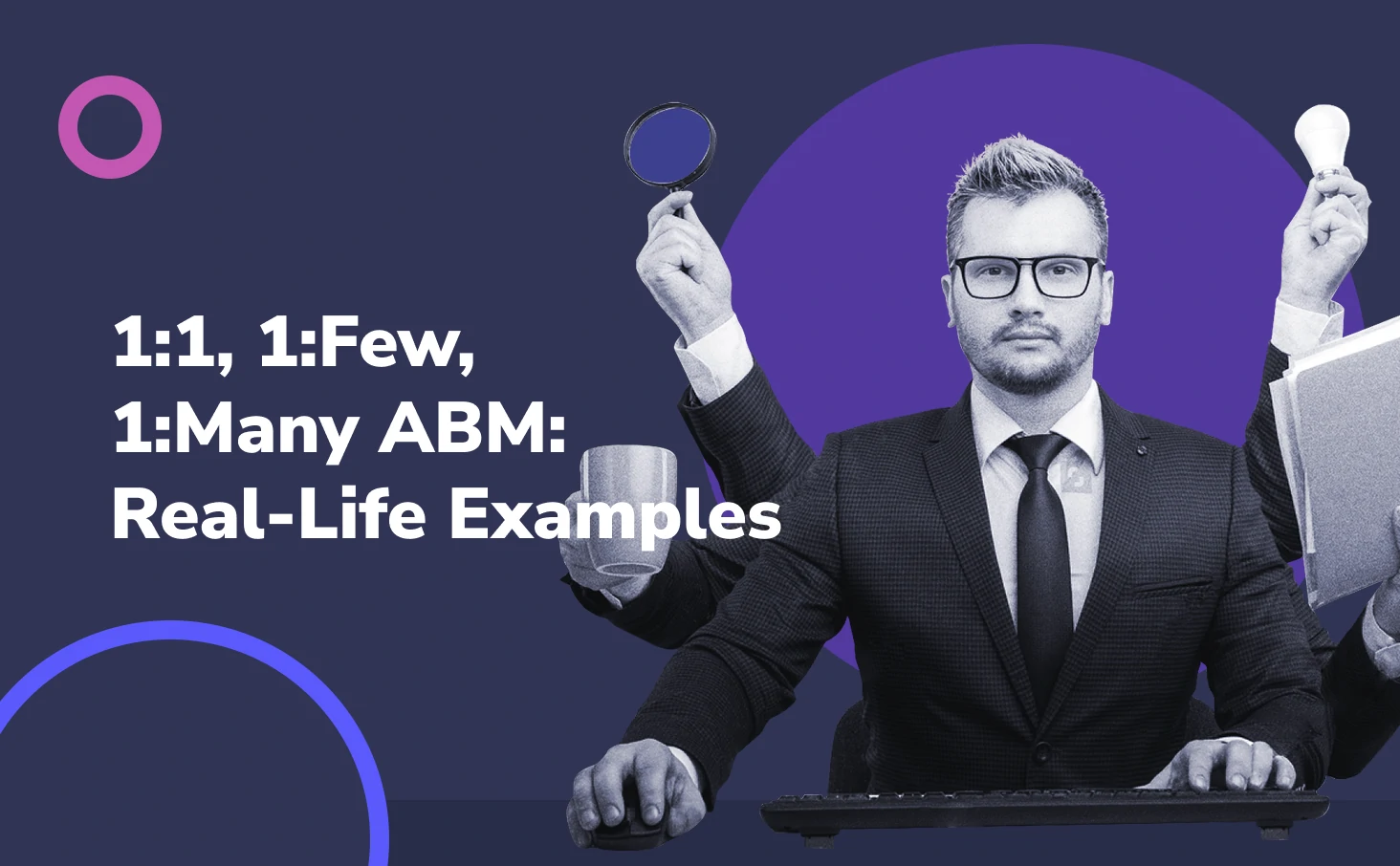When it comes to attracting new customers and growing your business, the traditional approach has been to cast a wide net and hope for the best.
Something eventually sticks... right?
Well, since you are here, we are pretty sure you know that this is not the approach you should take. Sure, it might bring in some new customers, but it’s not very strategic and there is a high chance you'll waste plenty of time, money, and resources.
That's why many businesses are turning to Account-Based Marketing (ABM) as a far more effective way to attract customers, build relationships, and increase sales.
ABM is a strategic approach that focuses on targeting specific, high-value accounts with tailored campaigns and personalized messaging. And while the idea behind may seem simple, different types of ABM can be applied depending on your business goals, needs, and resources.

In this article, we'll take a closer look at the three main types of ABM: 1:1, 1:Few, and 1:Many. We'll explore what each type entails and provide real-life examples of companies that have seen success with each approach. That way, you can better understand the different strategies and decide which one or ones are right for your business.
Let's dive right in!
1:1 (Strategic) ABM
1:1 (Strategic) ABM is the most personalized and targeted form of ABM. As the name suggests, it involves creating custom campaigns, content, and messaging tailored to individual high-value accounts. This type of ABM requires a significant investment of time, effort, and resources, but it also offers the highest potential return on investment (ROI) for the business.
Let's go and break it down so you can understand exactly what it entails.
The number of accounts: 1 to 10
When it comes to the number of accounts targeted, 1:1 ABM typically focuses on a smaller group of 5 to 10 high-value accounts, but it can also be focused on just one person or account. These are accounts that offer the highest potential ROI, align with the company's goals, and have the greatest chance of success.
Personalization level: High
The key to 1:1 ABM is personalization. To successfully engage and convert these high-value accounts, businesses must create campaigns and content that are specific to each account and tailored to their unique needs and pain points and make sure that the messaging is highly personal and delivered at the right time in the customer journey. This level of personalization is what sets 1:1 ABM apart from other forms of ABM and what makes it so powerful.
Volume of resources needed: High
Because of the high level of personalization, 1:1 ABM requires a significant investment of resources. Businesses must be prepared to invest time, effort, and budget in creating customized campaigns, content, and messaging for each targeted account.
To execute 1:1 ABM effectively, it is essential to have a dedicated ABM team in place that has the resources, knowledge, and expertise to develop and implement everything.
This team usually consists of 7-10 people and includes a variety of roles such as a dedicated graphic designer, multiple content writers, an experienced ABM strategist, and an analytics expert, to name a few.
It's important to note that this level of commitment can be demanding and can consume a significant portion of the marketing budget therefore businesses should carefully evaluate if the potential ROI justifies the cost and resources required for 1:1 ABM before committing to it.
Use cases
As with any type of marketing strategy, the success of 1:1 ABM depends on the use case. Doing 1:1 ABM for the sake of doing it, or just because you want to try something else, is not the right approach and it won't yield the desired results. So before you invest in this type of ABM or any other marketing type, form, or strategy for that matter, make sure it is the right one for your business and its goals.
When it comes to 1:1 ABM, there are several use cases where it's have been recognized to work exceptionally well:
Sometimes, a perception of your brand may be misaligned with the reality of your capabilities and offerings. In these cases, 1:1 account-based marketing can be one of the best ways to shift that perception and show potential customers the value of what you have to offer.
1:1 ABM allows you to focus on a single account or even a specific group of individuals within an account, and create highly personalized, tailored campaigns and content that highlight the unique benefits of your product or service.
This approach allows you to address any misconceptions they may have and turn a potentially negative perception into a positive one. And by providing them with highly targeted and relevant information, you increase the likelihood of engaging them and building a lasting relationship with them. Speaking of relationships...
-
Building relationships with high-value accounts
For larger businesses, 1:1 ABM can be a great way to establish strong relationships with high-value accounts.
By focusing on one particular account and tailoring your campaigns, messaging, and content to meet their specific needs and pain points, you can build trust with them and show them that you not only understand their needs but are willing to put in the effort to meet them.
This level of personalization has been proven to be one of the most effective ways to engage, convert and keep high-value accounts, as they feel more valued when they see that you are investing time and resources into creating a unique, tailored customer experience for them.
When executed properly, 1:1 ABM can help to build strong relationships with high-value accounts and keep them loyal for years to come.
-
Identifying opportunities for upsells and cross-sells
Another great use case for 1:1 ABM is to identify opportunities for upsells and cross-sells. By analyzing the account's existing products and services, you can gain a better understanding of their needs and start to map out potential opportunities for upsells and cross-sells.
For example, you may find that a customer is using one of your more basic products and could benefit from upgrading to the premium version with additional features. Or, you may find that a customer already uses one of your products and could benefit from purchasing other related products or services to complement it.
By leveraging 1:1 ABM to identify these opportunities and creating tailored campaigns and content to meet their needs, you can increase the likelihood of upsells and cross-sells. And since it's easier to retain and upsell or cross-sell existing customers than it is to acquire new ones, this can be a great way to boost your ROI, increase CLV and drive more revenue.
Yes, 1:1 ABM techniques can also be used for hiring key team members. Let's look at one of the examples!
Campaign example
Kevin Chiu, the co-founder of Catalyst, wanted to hire a Chief Revenue Officer (CRO) for his company, and he knew exactly who he wanted! He wanted Mark Kosoglow, who was VP of Sales at his previous company Outreach at the time.
Now, although this is not exactly a sale, but a campaign to hire a CRO for a startup, it's an amazing example of 1:1 ABM as it has all the elements of one.

- Identifying the best-fit account (in this case, the person suitable for the CRO role)
- Identifying their pain points (his current company was becoming too big and they didn’t need him in the board room anymore)
- Assessing the competition (identifying other companies that the individual may be considering)
- Creating custom content (such as a detailed report on why they should join your company instead of the competition)
- Involving other departments to create a personalized and unique experience for the individual.
That's what 1:1 ABM is all about. It's about finding the right person, learning as much as possible about them, connecting with them on a personal level, and providing them with an experience that will make them feel valued and respected.
Nailing this type of ABM is incredibly difficult, but when done properly it can lead to much more than just sales - it can lead to long-term relationships that will benefit your business for years to come.
Now, let's move on to 1:Few ABM.
1:Few ABM (ABM Lite)
1:Few ABM, also known as ABM Lite, is a less-intensive version of 1:1 ABM. It still involves some level of targeted campaigns and personalization, but the focus is shifted from individual accounts to larger groups of accounts.
Rather than creating highly tailored campaigns for each individual, 1:Few ABM focuses on creating personalized campaigns that are used to target a small group of individuals or companies that have similar characteristics like industry, size, or pain points.
ABM Lite is great for businesses that want to provide a unique, tailored experience to their customers but don’t have the resources or time to create individual campaigns for each account.
So, for example, if you have a small group of customers who all have the same specific pain points, you can create a single campaign that targets them all at once. This way, you can still provide them with a personalized experience without going through the effort of creating individual campaigns for each one.
The number of accounts: 5 to 10 per cluster
A 1:Few ABM usually targets 5 to 10 accounts per cluster, allowing businesses to target multiple clusters at once if they have the resources and time.
Personalization level: Moderate
As compared to 1:1 ABM, the personalization level of 1:Few is more moderate. The campaigns and content are tailored to the small group of accounts, not to each one, so the level of personalization is not as high.
Volume of resources needed: Moderate to High
The resources required for 1:Few ABM are usually moderate to high, depending on the number of clusters and accounts being targeted at once. Businesses need to have enough resources to create campaigns, content, and messaging for each cluster. So the resources needed will depend on the size of each cluster, the number of clusters, and the level of personalization desired.
The team structure for 1:Few ABM might be smaller than the one used for 1:1 ABM, but it still needs to have a dedicated ABM strategist and content writers, as well as a graphic designer, and integration and analytics experts.
Use Cases
With 1:Few ABM you focus on a specific group of accounts rather than just one individual account, and this approach is great for:
-
Reaching a larger group of key accounts
With 1:Few ABM you can reach out to multiple accounts and engage a larger group of key accounts in one go.
This approach can be particularly useful if you want to target accounts that share similar needs and pain points, have similar budget allocations, and are at the same or similar stages in their buying cycle.
Not only does this allow you to reach more accounts in less time and improves efficiency, but it also allows you to gain a better understanding of the market and quickly identify opportunities for improvement.
-
Increasing brand awareness and loyalty
1:Few ABM is also a great way to increase brand awareness and loyalty among key accounts. By delivering tailored campaigns, messaging and content that speaks directly to their needs and pain points, you can increase engagement and show them that you are invested in their success.
This approach also helps to build trust with these accounts, which can help you build longer-lasting relationships with them and increase their loyalty toward your brand. And since loyal customers are more likely to recommend your products or services to their peers, this can be a fantastic way to boost referrals and increase leads.
-
Identifying new opportunities
Same as with 1:1 ABM, you can use 1:Few ABM to identify new opportunities for upsells and cross-sells. By leveraging the data collected from multiple accounts, you can gain a better understanding of the market and quickly identify opportunities for improvement.
For example, you may find that a group of customers are using one of your products but could benefit from purchasing other related services or upgrades. Or, you may find that a group of customers have similar needs and could benefit from an upgraded version of your product with additional features.
What's more, you could even find out that there's unmet demand in the market for a certain product or service, which could open up potential new opportunities and help you to stay ahead of your competition.
Campaign example
One amazing example of a successful 1:Few ABM campaign is the one executed by Fullfunnel.io for their client, Iridium. Iridium wanted to expand its business, close larger clients, introduce new products and share its new market positioning.
To achieve this goal, they hosted a virtual summit. And, as you can guess, the summit was a huge success, resulting in:
- 2320 sign-ups
- 34 sales-qualified leads
- 5 new customers
What makes this even more impressive is that the budget for the campaign was only $3000 and it was led by a team of just three people.

Source: fullfunnel.io
How did they do it?
Well, first of all, they identified their target accounts and created a 2 tier segmentation. They manually selected the Tier 1 and Tier 2 accounts, and following the summit, they held activation workshops for IPC to further engage them.
For each tier, two product webinars were manually sent with personalized invites issued through email and SMS.
Instead of calling everyone immediately after the workshops, a content hub was sent out to attendees providing additional information about the product, answering potential questions, and helping identify warm accounts. Based on engagement metrics collected from the content hub, personalized follow-ups were sent out, resulting in a successful ABM Lite campaign with an incredible ROI.
The results speak for themselves and show that with the right strategy, 1:Few ABM is an incredibly powerful tool.
1:Many ABM (Programmatic ABM)
1:Many ABM, also known as Programmatic ABM, is the least intensive form of ABM. It involves targeting a large number of accounts at once and relies heavily on technology and automation.
The campaigns and content created for 1:Many ABM are not tailored to individual accounts, but rather to a larger group of accounts that have similar characteristics. The accounts are categorized and segmented based on criteria such as industry, size, location, goals, needs, and challenges, and content and messaging are created based on these criteria.
This type of ABM is great for businesses that want to reach a larger audience on a limited budget, as it requires fewer resources and is more cost-effective.
The number of accounts: 100 to 1000+
1:Many ABM usually targets anywhere from 100 to 1000+ accounts, allowing businesses to reach a large number of accounts at once.
Personalization level: Low
As compared to 1:1 and 1:Few ABM, the personalization level of 1:Many is low as the campaigns and content are not tailored to individual accounts, but rather to a larger group of accounts that have similar characteristics.
Volume of resources needed: Low to Moderate
The resources required for 1:Many ABM are usually low to moderate, as the campaigns are automated, and there is no need to create individual campaigns for each account. However, businesses will still need to have enough resources to create campaigns and content that are tailored to the target audience.
The team structure of 1:Many ABM might not need to include an ABM strategist, as the campaigns are mostly automated. However, it will still need content writers and integration and analytics experts.
Out of the three types of ABM, this one is the most cost-effective and requires the least amount of resources so it is a great option for businesses on a limited budget.
Use Cases
1:Many ABM can be used for a variety of purposes, such as:
-
Lead and demand generation
One of the most common uses for 1:Many ABM is lead generation. Since it's focused on reaching a larger audience, it's well-suited to campaigns that are designed to attract new leads and introduce them to your products or services.
By using a combination of tailored messaging, campaigns, and content that speaks to their needs and pain points, you can pique their interest and show them why you are the best choice for their needs or at least a viable option to consider.
-
Getting into new markets or promoting new products
When you are launching a new product or want to break into a new market, you want to get the word out as quickly and efficiently as possible and you want to reach as many people as you can.
1:Many ABM is perfect for such campaigns since it allows you to easily reach a large audience and quickly spread awareness of your product or service.
-
Educating potential customers
Not every potential customer is ready to make a purchase right away, so one of the most effective ways to move them down the funnel and increase their likelihood of becoming a customer is to educate them on your products or services, giving them the information they are looking for and help them get to know your brand.
This can be done through 1:Many ABM campaigns, where you can create tailored content that speaks to their needs and pain points and shows them why you are the best choice.
Campaign example
There are many amazing examples of 1:Many ABM campaigns out there, like the one executed by DocuSign, a cloud-based electronic signature platform.
They wanted to boost the traffic on their website, improve the click-through rates, and increase the number of conversations with customers that are more likely to buy their product.
Their solution?
A targeted display ad campaign for over 450 enterprise accounts from six different industries with the ad messaging and content offerings customized based on the industry and the buying stage of the customer.

Source: docusign.com
The campaign was a big success, resulting in:
- 22% increase in sales pipeline across the six industries
- 59% engagement rate
- 300% increase in page views
- 26% decrease in bounce rate
Another successful 1:Many ABM campaign is with our client, Autostore, the leading global automated storage and retrieval system (ASRS) who implemented a full-scale ABM approach across different regions, including EMEA, USA, and APAC.
Read More: The Complete Guide to One-to-Many (Programmatic ABM)
Which ABM strategy should you choose?
As you can see, all of these types of ABM campaigns have their place in the marketing world, and when done properly can result in amazing returns.
If you're considering an ABM strategy for your business, it's important to evaluate all of the options available and select the one that's best suited for your goals. A lot of times, a hybrid approach that combines all three of the models presented in this article can be the most successful way to go.
Regardless of which approach you choose, one thing is certain - with a well-executed ABM strategy and the right ABM tools, your business will be more successful than ever before.
We hope this article gave you a better understanding of what 1:1, 1:Few, and 1:Many ABM are and how they can help your business reach its goals. Now it's up to you how you'll use this knowledge to benefit your business for years to come.









.webp)